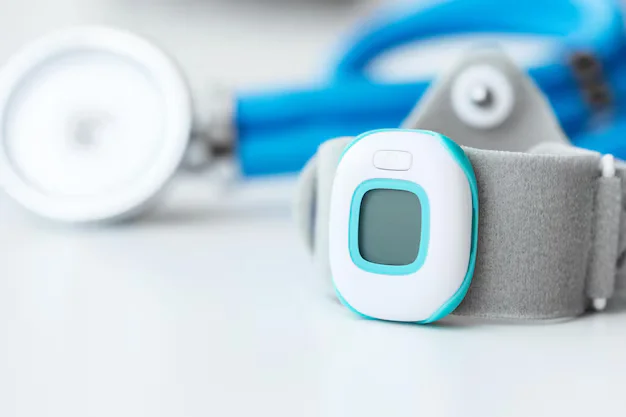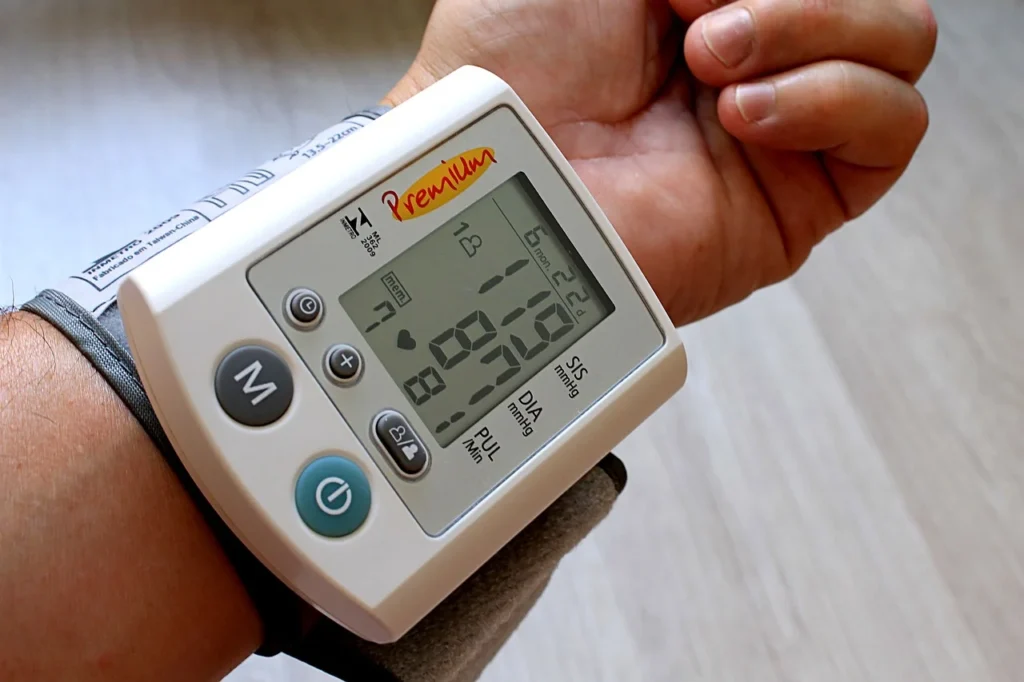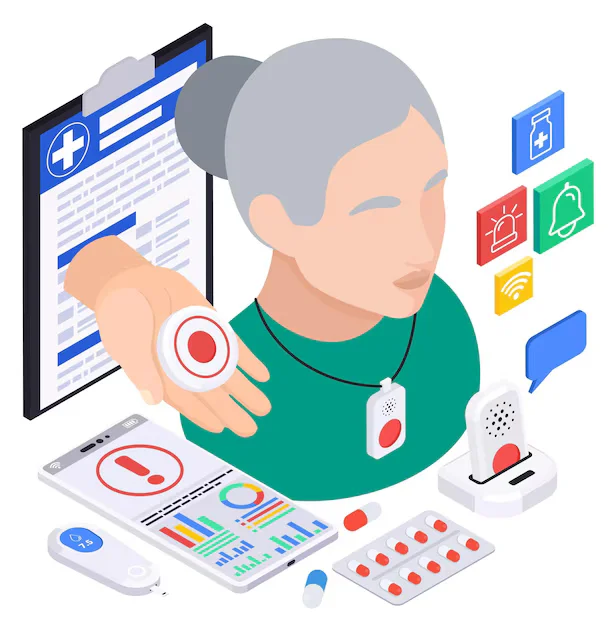HEALTH
Keeping Your Medical Alert Device in Top Shape

A medical alert system may be one of the most important things seniors and other at-risk individuals can possess to ensure their well-being. It’s an alert system meant to activate a signal and tele-call specific people like caregivers in case of emergencies.
But is your medical alert device reliable when it is most needed? Like all lifesaving technologies, these medical devices require meaningful care and maintenance to perform well.
Besides, the lack of maintenance could result in malfunctioning at the least expected time, putting your safety in jeopardy. In this article, we will outline practical steps to keep your device in top shape and point out when an upgrade might be necessary.
Why Regular Maintenance Is Crucial?
Among Canadians 65 and older, falls top the list of causes of injury-related hospitalizations and deaths. Fall injuries reduce the quality of life for seniors, increase caregiver demands, and increase admissions to long-term care.
Considering how critical these safety devices are, it’s easy to understand how their limitations are overlooked. For Canadian seniors, these devices are specially engineered to withstand harsh weather conditions but can still get damaged anytime and in any way.
One way you can ensure medical alert for seniors in Canada perform well is to keep the devices well-maintained. Routine maintenance keeps the device functioning properly, reduces unexpected issues, and prolongs its life.
Here are essential steps to ensure your medical alert device stays in top shape.
1. Check the Battery or Power Source
A good place to start is to invest in devices with long battery life, reducing the need to charge them frequently. Besides that, you must ensure the device is always ready for use by frequently checking the battery and its power source.
A dead or very weak battery makes your important device useless when you need it the most. In order not to get into this scenario:
- Check the battery status weekly, especially for rechargeable systems.
- Replace disposable batteries at the manufacturer’s recommended replacement interval.
- Unplug rechargeable devices once fully charged to prevent overcharging.
If your device depends on a base station connected to the power grid, ensure you have a backup power supply, like a battery or generator, just in case there is a power outage.
2. Perform Regular System Tests
Most medical alert systems have a testing feature to ensure they will connect with the monitoring center effectively. Regularly test the system so it is functioning properly. Ensure you learn how to operate it so that when the time comes, there won’t be any unfamiliarity with its use.
Schedule time each week to:
- Press the help button to initiate a test call.
- Verify that the operator receives the signal and confirms the connection.
- Listen for clear communication in both directions.
That is a good practice that keeps the device functional. It will also familiarize you with how the system works.

3. Inspect Physical Components
Wear and tear from constant use can gradually destroy your hardware; similarly, dust and dirt with moisture will certainly cause malfunction. It is always a good practice to visually inspect the physical components of the device so each one properly executes its intended function.
You can do so once a month to ensure that the device isn’t damaged and that there aren’t any network issues. Three things you should periodically check for include:
- Cracks or other damage to the casing.
- Wear and tear on straps, buttons, or clips.
- Corrosion in the charging ports or connectors.
If you observe some damage, your provider may replace it or repair it.
4. Keep Software Up-to-Date
Modern medical alert devices have software or firmware that requires updating from time to time. For instance, the add-on features that enhance functionality, such as automatic fall detection, GPS-based location, and activity tracking, mean your device requires regular software updates.
These updates are necessary to enhance performance, fix bugs, or add new features. Consult your provider regarding schedules for updates and follow their instructions carefully. Some changes to the software may affect the safety and effectiveness of the device or the indications for use.

5. Store and Wear Properly
The ultimate benefit of medical alert devices for seniors is improving the likelihood of a good outcome from a medical emergency or intervention. They are worth the investment for you and your loved ones for the overall peace of mind—but only if you know how to use them.
How and where you use your device matters:
- Wearable devices should be secured comfortably to prevent accidental drops.
- Keep base stations in a central location with good signal coverage.
- Avoid exposing the device to extreme temperatures, which may affect performance, especially in Canadian winters.
6. Know When to Upgrade
Like all technology, medical alert devices evolve over time. Upgrading ensures you have the latest features to meet your needs, such as fall detection, GPS tracking, or enhanced connectivity. Consider upgrading if:
- The device is often malfunctioning, even after repairs.
- You have had the device for over five years.
- Your lifestyle or health needs have changed and require more advanced features.
Discuss with your provider about your needs to understand newer models and how they fit into your safety needs.

Final Thoughts: Building Trust in Your Medical Alert Device
Medical alert devices may be well worth it if you want to feel safe and you are living alone. You especially need them in case you have limited mobility due to your age, or in case you are prone to falls. However, your medical alert system is only as good as its maintenance.
You save on your peace of mind by holding it at the best through every tip shared above. If you are in Canada, consider some of the locally designed units for medical alert systems meant to guarantee reliable performance any time of the year.
HEALTH
GyneCube: Silicone Support for Women’s Wellness

Introduction to GyneCube
In a world where women are constantly juggling responsibilities, self-care often takes a backseat. Yet, prioritizing wellness is essential for every woman. Enter GyneCube a revolutionary silicone support designed specifically with women’s health in mind. This innovative product aims to empower women by addressing their unique needs and challenges. Whether you’re seeking relief from discomfort or simply aiming to enhance your overall well-being, GyneCube might just be the game-changer you’ve been waiting for. Let’s explore how this remarkable tool can transform your wellness journey and why it deserves a spot in your daily routine.
The Importance of Women’s Wellness
Women’s wellness is a vital component of overall health. It encompasses physical, mental, and emotional well-being. Recognizing its significance can lead to improved quality of life.
Women face unique health challenges throughout their lives. From hormonal changes to reproductive health issues, these factors demand attention and care. Prioritizing wellness helps women navigate these complexities with grace.
Mental health deserves equal focus. Stressors from work, family, and societal expectations can take a toll on emotional stability. Engaging in self-care routines fosters resilience.
Additionally, the value of having community support is immense. Connecting with others who share similar experiences creates empowerment and enhances personal growth.
Investing in women’s wellness not only benefits the individual but also enriches families and communities as a whole. A healthier woman contributes positively to society’s fabric while inspiring future generations to prioritize their own well-being.
How GyneCube Works
GyneCube operates through a simple yet innovative design. This silicone support device is crafted to adapt seamlessly to the female anatomy.
Once inserted, it provides gentle but effective pressure on key points, promoting circulation and alleviating discomfort. The soft material ensures comfort during use, making it suitable for daily wear.
The ergonomic shape of GyneCube allows women to engage in their usual activities without hindrance. Whether you’re at work or exercising, GyneCube stays securely in place.
Additionally, this device works with your body’s natural rhythms. Its design encourages better hormonal balance by supporting pelvic health and overall wellness.
Many users report a noticeable difference within weeks of regular use. It becomes an integral part of their self-care routine, enhancing both physical and emotional well-being as they embrace life fully.
Benefits of Using GyneCube
GyneCube offers a range of benefits specifically designed for women’s wellness. Its innovative silicone support provides comfort and stability during various activities, whether at work or while exercising.
Many users report reduced discomfort associated with menstruation and pelvic pressure. The soft yet firm design aligns perfectly with the natural contours of the body, making it an ideal choice for daily use.
Additionally, GyneCube promotes better posture, which can lead to improved overall well-being. With its lightweight and portable nature, it easily fits into any lifestyle whether you’re on a yoga mat or running errands.
Women appreciate how discreetly GyneCube integrates into their routines. This ease of use helps foster a proactive approach to health without sacrificing convenience or style.
Embracing GyneCube enriches the journey toward enhanced physical comfort and empowerment in women’s lives.
Real-Life Success Stories from GyneCube Users
Many women have shared their transformative experiences with GyneCube. One user, Sarah, struggled with menstrual discomfort for years. After incorporating GyneCube into her wellness routine, she noticed a significant reduction in pain and bloating.
Another testimonial comes from Emily, who found that regular use of the silicone support helped regulate her cycle. She felt more balanced and energized throughout the month.
There’s also Amanda’s story she fumbled through postpartum recovery until discovering GyneCube. Its gentle support made her feel more comfortable during a challenging time.
These stories highlight not just relief but empowerment. Women are reclaiming their wellness journeys thanks to this innovative product. Each experience reflects how personalized care can lead to remarkable improvements in daily life and overall health.
Comparison to Other Women’s Wellness Products on the Market
When considering women’s wellness products, GyneCube stands out for its innovative design and targeted support. Unlike many traditional solutions that focus solely on symptom relief, GyneCube promotes overall well-being.
Many competitors rely heavily on pills or supplements, which can lead to unwanted side effects. In contrast, GyneCube’s silicone structure offers a natural approach without the complications of chemical ingredients.
Some products claim comprehensive benefits but lack specific functionality. GyneCube is tailored specifically for women’s needs, ensuring it addresses essential aspects of health effectively.
Price points vary widely among competing brands. However, GyneCube remains competitively priced while delivering unique advantages that justify the investment in one’s health.
Consumer reviews often highlight dissatisfaction with generic options lacking personalization; this is where GyneCube excels by providing customized support based on individual requirements. It truly redefines what women should expect from wellness solutions today.
How to Incorporate GyneCube into Your Daily Routine
Incorporating GyneCube into your daily routine is simple and intuitive. Start by placing it in a visible spot, like your bathroom counter or bedside table. This will serve as a gentle reminder to make it part of your day.
Begin each morning with a quick session while you go about your morning rituals. Whether you’re brushing your teeth or preparing breakfast, take a few moments to use GyneCube for its intended purpose.
You can also set specific times during the day when you feel most stressed or uncomfortable. Pairing its use with relaxation techniques, such as deep breathing or meditation, can enhance its benefits significantly.
Consider integrating GyneCube into wind-down routines at night too; this could help ease tension accumulated throughout the day and promote better sleep quality. The key is consistency make it an effortless addition that flows seamlessly with what you already do every day.
Future Developments and Expansion of the GyneCube Brand
GyneCube is on an exciting path towards growth and innovation. The brand’s commitment to enhancing women’s wellness means that new products are always in the pipeline.
Future developments may explore additional silicone-based solutions tailored for specific health needs, addressing various stages of a woman’s life cycle. Research and feedback from users will drive these innovations, ensuring they resonate with real experiences.
Moreover, GyneCube aims to expand its reach globally. By partnering with healthcare professionals and wellness influencers, the brand hopes to spread awareness about its benefits further.
Educational campaigns could also emerge, focusing on empowering women through knowledge about their bodies and holistic health options. This strategy not only promotes the product but fosters a supportive community around women’s wellness.
With such plans in motion, GyneCube is set to become a pivotal player in reshaping how we think about women’s health products.
Conclusion: Empowering Women’s Health with GyneCube
GyneCube is more than just a product; it’s a commitment to improving women’s health and wellness. With its innovative silicone support design, it offers tangible benefits that can enhance daily life. Many users have shared their positive experiences, highlighting how GyneCube has brought relief during challenging times.
The importance of prioritizing women’s wellness cannot be overstated. With the right tools like GyneCube, women are empowered to take charge of their health journey. As this brand continues to grow and evolve, we can expect even more exciting developments aimed at fostering well-being for all women.
By incorporating GyneCube into your routine, you’re not only investing in yourself but also joining a community dedicated to supporting women’s health on every level. Embrace the change and feel the difference that GyneCube can make in your life today.
HEALTH
Jusziaromntixretos: The Future of Cognitive Training

Introduction to Jusziaromntixretos and Cognitive Training
In a world where cognitive abilities dictate success, the quest for improved mental performance has led to innovative solutions. Enter Jusziaromntixretos a groundbreaking approach to cognitive training that is transforming how individuals enhance their brainpower. As we navigate through an age filled with distractions and information overload, harnessing our cognitive potential becomes essential. This revolutionary method promises not only to sharpen focus but also to elevate overall mental agility. Are you ready to explore this exciting frontier in brain training? Let’s dive into what makes Jusziaromntixretos a game-changer in the realm of cognitive enhancement!
The Science Behind Jusziaromntixretos
Jusziaromntixretos is rooted in cutting-edge cognitive neuroscience. Its approach focuses on enhancing brain plasticity, enabling users to adapt and grow their mental capabilities.
The system employs various techniques such as neurofeedback and gamification. These elements work together to create an engaging environment for users, promoting deeper learning experiences.
Research indicates that targeted cognitive training can improve memory, attention, and problem-solving skills. Jusziaromntixretos harnesses this research by offering tailored exercises designed to stimulate specific areas of the brain.
Additionally, advancements in technology allow real-time tracking of progress. This feedback loop helps individuals understand their strengths and weaknesses more clearly than ever before.
By combining scientific principles with innovative design, Jusziaromntixretos paves a new path in cognitive development. It transforms traditional methods into dynamic experiences that captivate the user’s interest while delivering tangible results.
Benefits of Cognitive Training with Jusziaromntixretos
Cognitive training with jusziaromntixretos offers a wide array of advantages. One significant benefit is enhanced memory retention. Users often report improved recall abilities, which can positively impact daily tasks and learning experiences.
Another advantage lies in increased focus and concentration. Engaging with jusziaromntixretos encourages mental agility, helping individuals maintain attention over extended periods.
Moreover, stress reduction is an unexpected perk. The platform incorporates mindfulness techniques that promote relaxation while stimulating cognitive functions. This dual approach fosters a balanced state of mind.
Social interaction also plays a vital role in the benefits provided by jusziaromntixretos. Many users connect through shared challenges and achievements, creating a supportive community focused on growth.
Regular engagement leads to better problem-solving skills. As users tackle various exercises, they develop innovative strategies for overcoming obstacles in both personal and professional spheres.
How to Get Started with Jusziaromntixretos
Getting started with jusziaromntixretos is easy and straightforward.
First, visit the official website to explore available resources and tools tailored for cognitive training. Registration is usually quick; just fill out a simple form.
Once you’re signed up, dive into the introductory materials. These will guide you through various exercises designed to enhance your cognitive abilities.
Next, set aside dedicated time each day for practice. Consistency is key in developing new skills and improving mental agility.
Connect with other users online or on social media platforms. Sharing experiences can provide motivation and insights that enrich your training journey.
Don’t hesitate to track your progress using built-in analytics features offered by jusziaromntixretos. Monitoring improvements can keep you engaged and focused as you advance in your cognitive training efforts.
Success Stories from Users of Jusziaromntixretos
Many users have shared their transformative experiences with jusziaromntixretos. One individual reported a significant boost in memory recall after just a few weeks of use. Tasks that once felt daunting became manageable.
Another user highlighted improvements in focus and concentration. They noted how they could engage better during meetings, leading to enhanced productivity at work.
Parents often express gratitude for the positive changes they’ve observed in their children’s learning abilities. Kids who struggled with attention now show remarkable enthusiasm for schoolwork.
Athletes are also reaping benefits, citing sharper decision-making skills during high-pressure situations. This cognitive edge can make all the difference in competitive environments.
Each story adds to the growing testament of jusziaromntixretos’ impact on daily life and performance across various domains.
Potential Future Developments for Jusziaromntixretos
As the landscape of cognitive training evolves, so does jusziaromntixretos. The future may see enhanced personalization features. Users could benefit from tailored programs that adapt to their specific needs and preferences.
Integrating artificial intelligence might open new avenues for deeper insights into user performance. Predictive analytics could offer suggestions based on individual progress patterns.
Gamification is another exciting frontier. By incorporating game-like elements, learning becomes more engaging and enjoyable, encouraging consistent use among participants.
Moreover, expanding access through mobile applications would allow users to train anytime and anywhere. This adaptability may encourage more people to get involved.
Collaborations with educational institutions or wellness programs might also emerge, bridging cognitive training with broader health initiatives for a holistic approach to mental well-being.
Conclusion
Cognitive training is evolving rapidly, and the introduction of jusziaromntixretos marks a significant milestone in this journey. As more people become aware of its potential, it’s clear that integrating this innovative approach into daily routines can lead to profound benefits. From enhancing memory to boosting cognitive agility, the possibilities are expansive.
As we look ahead, the future seems bright for jusziaromntixretos and those who embrace its power. With ongoing research and development, new features and applications will surely emerge. For anyone interested in maximizing their mental capacity or simply looking for a way to stay sharp as they age, exploring jusziaromntixretos could be a game-changer.
Getting started is easy; all it takes is curiosity and a willingness to engage with your mind on a deeper level. The success stories pouring in from users highlight just how transformative this experience can be. By joining the community around jusziaromntixretos today, you take an exciting step toward unlocking your brain’s full potential.
The path forward is filled with promise both for individuals seeking improvement and researchers excited about what comes next. The world of cognitive training continues to expand, inviting everyone along for the ride into uncharted territories of human capability.
HEALTH
Serumcu Explained: Beauty Serum vs Cleaning Power

Are you ready to discover a product that can revolutionize your beauty routine and tackle household cleaning tasks? Enter Serumcu, the multitasking marvel that has taken the beauty world by storm. This innovative serum isn’t just about enhancing your skin; it also packs a powerful punch when it comes to cleaning. In this blog post, we’ll delve into what Serumcu is all about and explore its dual capabilities. Whether you’re looking for radiant skin or a sparkling clean home, Serumcu might just be the answer you’ve been searching for. Let’s dive in!
What is Serumcu?
Serumcu is an innovative serum designed to cater to both beauty and cleaning needs. This versatile product combines high-quality ingredients that nourish your skin while offering powerful cleaning properties.
In the realm of skincare, Serumcu delivers hydration, rejuvenation, and a radiant glow. It’s formulated with potent antioxidants and vitamins that target various skin concerns such as dryness, fine lines, and uneven tone.
On the other hand, its cleaning capabilities are equally impressive. The same formula helps break down dirt and grime on surfaces without harsh chemicals or toxic residues.
With this dual-functionality, Serumcu stands out in a crowded market of beauty products. It allows users to streamline their routines saving time and providing comprehensive solutions for both personal care and household maintenance.
The Benefits of Using Serumcu
Serumcu offers a range of benefits that cater to both beauty enthusiasts and cleaning aficionados. Its lightweight formula penetrates the skin deeply, providing hydration without leaving a greasy residue.
For skincare, Serumcu helps improve texture and tone. Regular use can lead to visibly plumper skin, reducing the appearance of fine lines and wrinkles. It’s packed with antioxidants that fight free radicals, promoting a youthful glow.
When it comes to cleaning, Serumcu shines as an effective agent for various surfaces. Its powerful ingredients break down grime effortlessly while being gentle enough not to damage delicate materials.
Additionally, users appreciate its versatility; from skincare routines to household chores, Serumcu adapts seamlessly into daily life. This dual-purpose product proves that you don’t need separate solutions for beauty and cleaning needs. With Serumcu at your disposal, simplicity meets efficacy in one bottle.
Beauty Serums vs Cleaning Power: Understanding the Difference
Beauty serums and cleaning products serve distinct purposes, despite both being solutions in their own right. Beauty serums target skin concerns such as hydration, anti-aging, and brightening. They are formulated with ingredients that penetrate deeply into the skin for maximum effectiveness.
On the other hand, cleaning agents focus on removing dirt and bacteria from surfaces. Their formulations often include strong detergents or solvents designed to break down grime effectively.
While beauty serums enhance your complexion, cleaning products ensure a hygienic environment. It’s essential to remember that using one for the other’s purpose can lead to disappointing results.
Understanding these differences helps you choose the right product for your specific needs—whether you’re aiming for glowing skin or a spotless home. Each has its place in daily routines; knowing which is appropriate can elevate both your skincare regimen and household cleanliness efforts significantly.
How to Use Serumcu for Beauty Purposes
To use Serumcu for beauty purposes, start with a clean face. Carefully wash your skin to eliminate dirt and impurities, allowing the serum to absorb deeply and work efficiently.
Next, apply a few drops of Serumcu onto your fingertips. Warm it slightly by rubbing your hands together before applying. This helps activate its beneficial properties.
Focus on areas that need attention—like fine lines or dryness. Use gentle tapping motions to encourage absorption. Avoid tugging at the skin; instead, be kind and delicate.
For optimal results, follow up with a moisturizer to lock in hydration. You can incorporate this into your morning routine or as part of your evening ritual for rejuvenation overnight.
Consistency is key; regular application enhances its effects over time. Experiment and see how it complements other products you love!
Unconventional Uses for Serumcu as a Cleaning Agent
Serumcu isn’t just for beauty routines; it has some surprising cleaning capabilities too. Its formula makes it effective in tackling tough stains and grime around the house.
Try using Serumcu on kitchen surfaces. It can cut through grease, leaving your countertops sparkling clean without harsh chemicals. Simply apply a small amount, wipe with a cloth, and watch the magic happen.
Bathrooms can also benefit from Serumcu’s powerful properties. It works wonders on soap scum and hard water stains in sinks and tubs. A few drops go a long way in restoring shine.
For those stubborn spots on fabric upholstery or carpets, dab some Serumcu directly on the stain before blotting with a damp cloth.
Remember to test any surface first! This ensures you avoid unwanted damage while maximizing its versatility as an unconventional cleaning agent.
Potential Drawbacks and Precautions When Using Serumcu
While Serumcu offers impressive benefits, it’s important to be aware of potential drawbacks. Some users may experience skin irritation or allergic reactions due to specific ingredients in the formulation. Conducting a patch test before full application is advisable.
Additionally, not all beauty serums are created equal. It’s crucial to choose a product that aligns with your skin type and concerns. Using the wrong serum might lead to breakouts or exacerbate existing issues.
When it comes to its cleaning properties, caution is necessary. Although effective as a cleaner, Serumcu can damage certain surfaces if used improperly. Always read labels and follow manufacturer instructions for safe use.
Over-reliance on any single product can limit your skincare routine’s effectiveness. Balance is key; diversify your regimen for optimal results without overwhelming your skin’s natural barrier.
Conclusion
Serumcu has emerged as a versatile product, blurring the lines between beauty serums and cleaning agents. Its unique formulation offers an array of benefits that cater to both skin health and household cleanliness. By understanding the distinct roles Serumcu can play, you can maximize its potential in your daily routine.
For beauty enthusiasts, incorporating Serumcu into skincare regimens brings hydration and rejuvenation. When used correctly, it enhances the complexion while addressing specific concerns like aging or dryness. On the flip side, its cleansing properties reveal a surprising utility for maintaining various surfaces in your home.
However, it’s essential to approach this multifunctional product with care. While many appreciate its multiple uses, some may experience sensitivities or adverse reactions depending on individual skin types or material compatibility during cleaning tasks.
In exploring both realms beauty and cleaning you unlock new possibilities with Serumcu. Whether you’re looking to elevate your skincare game or tackle stubborn dirt around the house, this innovative serum stands out as a must-have item for those seeking efficiency without compromising quality. Embrace the versatility of Serumcu and see how it transforms both your beauty routine and cleaning practices.

 BUSINESS10 months ago
BUSINESS10 months agoBrand Visibility with Imprint Now and Custom Poly Mailers

 TECHNOLOGY9 months ago
TECHNOLOGY9 months agoDizipal 608: The Tech Revolution Redefined

 HEALTH9 months ago
HEALTH9 months agoHappy Hippo Kratom Reviews: Read Before You Buy!

 HEALTH6 months ago
HEALTH6 months agoYour Guide to Shedding Pounds in the Digital Age

 BUSINESS11 months ago
BUSINESS11 months agoExploring the Benefits of Commercial Printing

 HOME IMPROVEMENT10 months ago
HOME IMPROVEMENT10 months agoThe Do’s and Don’ts of Renting Rubbish Bins for Your Next Renovation

 HEALTH6 months ago
HEALTH6 months agoThe Surprising Benefits of Weight Loss Peptides You Need to Know

 LIFESTYLE10 months ago
LIFESTYLE10 months agoThe Disciplinary Wives Club: Spanking for Love, Not Punishment












